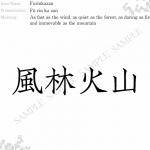Using Sources in Academic Writing
In university, your writing (including exams, essays, lab reports, etc.) demonstrates that you yourself have engaged in a process of learning. In the professional world, presentations of original work demonstrate your status as a scholar or expert. For that reason, in your writing you must always be clear about which words and ideas are yours, and which come from other sources.
Even if you do not intend to cheat, it is still possible to plagiarize accidentally if you use sources incorrectly.
It is perfectly fine to make use of the words and ideas of others (including friends, professors, written sources, etc.) as examples or evidence. However, you must make sure that any reader can distinguish your ideas and creations from the ideas and creations you have discovered in the source material of others.
One of the best ways to learn how to integrate sources into your writing is to see how the experts do it: read works by scholars and notice how they manage to use the words and ideas of others clearly. In your own writing, you must:
- In your document (paper, essay, speech, etc.), identify the presence of ideas/creations that you have taken from the source material of others, whether you directly quote, paraphrase, or summarize those ideas. Do this with words such as according to… or as Dr. X said… and in-text citations.
- In your reference list, provide a complete bibliographic citation for each source.
You must take both steps. Listing a source only in your reference list is not adequate. To help your reader distinguish your original ideas and content from those created by others, you must show the origin of any word or ideas not your own immediately after their use in your document with an in-text citation.
Expectations and standards for academic writing are not the same across the world, nor are they the same in all fields of study. Do not assume you can apply previously learned techniques. It is your responsibility to seek information and ask questions of your professors until you are sure you understand their expectations and the standards at Eastern Michigan University.
EMU Plagiarism Policy
Plagiarism (submitting some or all of someone else’s work as your own) is unacceptable at Eastern Michigan University. That’s a simple fact, and is expressed in the Eastern Michigan University Conduct Code and Judicial Structure for Students and Student Organizations:
I.A.11. Academic dishonesty
1.Students are not to engage in any form of academic dishonesty including, but not limited to, plagiarism, alteration of records, substitution of another’s work representing it as the student’s own, and knowingly assisting another student in engaging in any such activity. For purposes of this section, plagiarism is defined as the knowing use, without appropriate approval, of published materials, expressions, or works of another with intent to represent the material(s) as one’s own.
See Student Conduct and Community Standards for more information about the EMU Student Code of Conduct and the University Judicial Board.

More Information
- Cite Sources – how to use APA, MLA, and other formats for citing sources
- Academic Integrity – examples and discussion from Princeton University
- Understanding Plagiarism an online tutorial presenting plagiarism in the context of everyday events





 Daimyo in japanese writing practice
Daimyo in japanese writing practice Direwolf20 mystcraft age writing guide
Direwolf20 mystcraft age writing guide Mystery writing conference anthologies 2016
Mystery writing conference anthologies 2016 Cramp your style definition in writing
Cramp your style definition in writing Mayan writing mathematics and astronomy
Mayan writing mathematics and astronomy






